In today’s global economy, importing goods from China is a vital component for businesses seeking to enhance their product offerings and improve profitability. However, navigating the complex world of logistics can be daunting, with various shipping methods, customs regulations, and freight forwarding options. This comprehensive guide aims to simplify the importing process by providing insights into selecting the right shipping methods, optimizing packaging, and leveraging the expertise of freight forwarders. By applying strategic planning and cost-saving tactics, businesses can streamline their operations, ensure timely deliveries, and ultimately gain a competitive edge in the market. Whether you’re a seasoned importer or new to international trade, understanding these essential aspects will empower you to make informed decisions and drive successful importation from China.
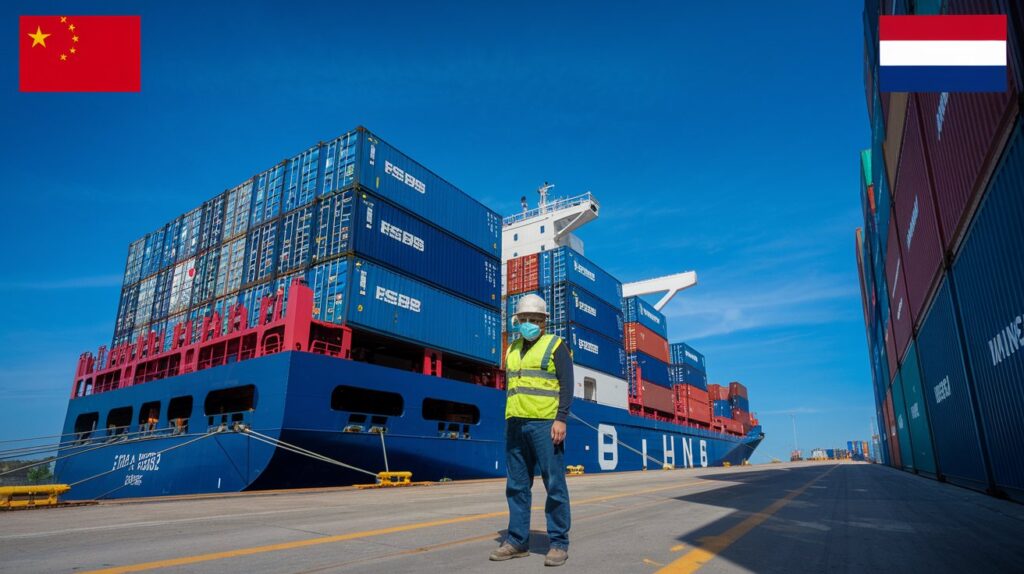
1. Choose the Right Shipping Method
Ocean Freight vs. Air Freight
When deciding how to transport goods from China, the two main shipping methods to consider are ocean freight and air freight. Each method has its strengths and weaknesses, influencing cost, speed, and suitability for different types of cargo.
| Shipping Method | Ocean Freight | Air Freight |
|---|---|---|
| Cost | Generally lower for large shipments | Higher, particularly for smaller shipments |
| Speed | Slower, typically taking 20-40 days | Much faster, usually 1-7 days |
| Capacity | Suitable for large volume shipments (FCL/LCL) | Limited capacity, ideal for lightweight goods |
| Environmental Impact | Higher emissions per ton | Lower emissions per ton |
Ocean freight is often the preferred option for bulk shipments due to its cost-effectiveness, particularly for FCL (Full Container Load) shipments. Conversely, air freight, while more expensive, is advantageous for urgent deliveries or lighter cargo that needs to be shipped quickly.
FCL vs. LCL
When utilizing ocean freight, businesses face the choice between FCL and LCL shipments.
-
FCL (Full Container Load): This option is ideal for businesses that have enough goods to fill an entire container. The benefits include reduced risk of damage, faster transit, and potentially lower unit costs.
-
LCL (Less than Container Load): Suitable for smaller shipments, LCL allows multiple shippers to share a container. While cost-effective for small volumes, it may entail longer lead times and increased handling risks.
Factors to Consider
Selecting the appropriate shipping method involves careful consideration of several factors:
- Volume and Weight of Goods: Determine if your shipment qualifies for FCL or LCL based on its cubic meter and weight.
- Budget: Analyze shipping costs, including freight charges and additional fees such as insurance and duties.
- Delivery Timeline: Define how quickly you need the goods and select a shipping method that aligns with your timelines.
- Nature of Goods: Consider the fragility, perishability, or special handling requirements of your cargo when selecting the shipping method.
Read More:
- Shipping From China To Netherlands
- Shipping From China To Spain
- Shipping From China To Germany
- Shipping From China To France
- Shipping From China to Italy
- Shipping From China To Poland
- Shipping From China to United Kingdom
2. Find a Reliable Local Freight Forwarder in China
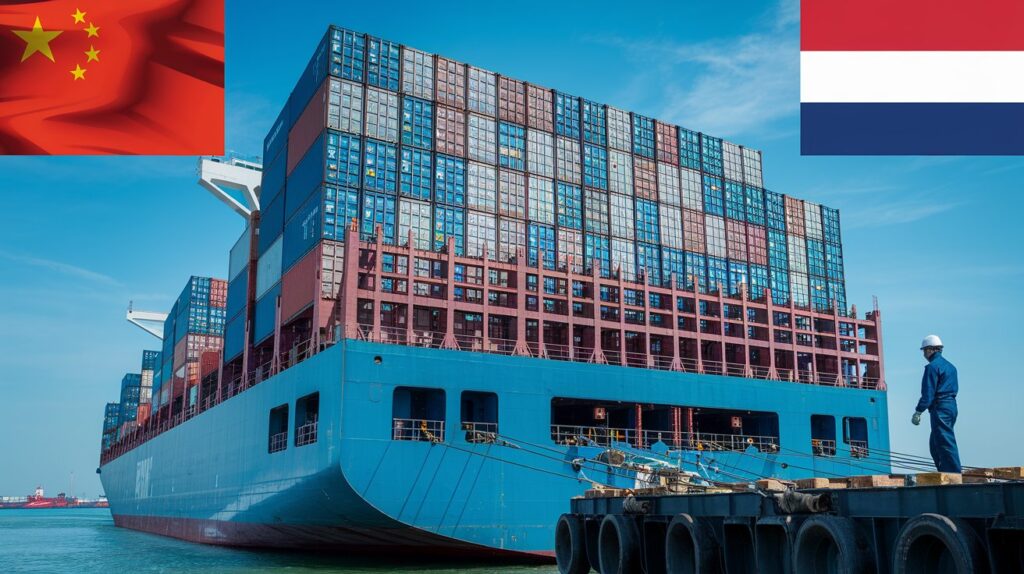
Partnering with a local freight forwarder can streamline the import process.
Benefits of Using a Chinese Freight Forwarder
Choosing a Chinese freight forwarder offers several advantages:
- Local Expertise: Their extensive knowledge of local regulations, ports, and logistics networks can help navigate any complexities.
- Cost-Effectiveness: Established relationships with shipping lines and logistics providers can result in better shipping rates and terms.
- Language and Cultural Barriers: A local freight forwarder can bridge language gaps and offer insights into cultural nuances that could impact logistics.
What to Look for in a Freight Forwarder
When selecting a freight forwarder in China, consider the following attributes:
- Experience and Reputation: Research the forwarder’s track record in handling shipments to your target destination. Look for reviews or testimonials from previous clients.
- Services Offered: Choose a forwarder that provides a comprehensive range of services such as Customs Clearance, Warehousing Services, and Insurance Services.
- Transparency: Ensure the forwarder is upfront about pricing, including any potential hidden fees.
- Insurance Coverage: Verify that the freight forwarder offers appropriate coverage to protect your goods during transit.
Negotiating the Best Rates
Negotiating rates with your freight forwarder can lead to substantial cost savings. Here are tips for effective negotiation:
- Understand Market Rates: Research standard shipping costs for your route to gauge reasonable pricing.
- Leverage Volume: If you plan to ship frequently, negotiate long-term contracts that could yield better rates.
- Discuss Service Options: Be open about your needs and preferences, which can impact the pricing structure.
- Seek Multiple Quotes: Obtain quotes from several forwarders to compare services and prices, ensuring you select the best option.
By navigating the complexities of shipping methods and partnering with a reliable freight forwarder like Dantful International Logistics, businesses can enhance their import processes. Dantful provides a highly professional, cost-effective, and high-quality one-stop international logistics service for global traders, ensuring that your goods reach their destination safely and efficiently.
You may be interested in the following related articles:
- Step-by-Step Guide to Sea Freight From China to Luxembourg
- How to Save Money with a Freight Forwarder from China to Turkmenistan
- Step-by-Step Guide to Sea Freight From China to Belgium
- The Ultimate Guide to Choosing a Freight Forwarder from China to Bolivia
- Sea Freight from China to Ghana: A Complete Step-by-Step Process
- The Ultimate Guide to Sea Freight from China to Iran
3. Optimize Your Packaging and Utilization
Proper Packaging to Minimize Damage
Effective packaging is vital to prevent damage during transit. Here are essential elements to consider:
-
Quality Materials: Utilize high-quality, durable packaging materials that can withstand various handling conditions. This includes reinforced corrugated boxes, bubble wrap, and other cushioning materials.
-
Product-Specific Packaging: Tailor your packaging to the nature of the product. Fragile items may require additional padding, while perishable goods might need insulated containers to maintain temperature.
-
Testing Packaging: Conduct drop tests or simulations to evaluate how your packaging holds up under various conditions, helping to identify any weaknesses that could lead to damage.
-
Clear Labeling: Ensure that each package is clearly labeled with handling instructions, such as “Fragile” or “Keep Dry,” to inform carriers and warehouse staff about the proper handling of your goods.
Maximizing Container Space
Efficient utilization of container space can lead to significant cost savings. Consider the following strategies:
-
Standardized Packaging Sizes: Use standardized box sizes that fit neatly in containers, reducing wasted space. This practice is particularly important for FCL (Full Container Load) shipments.
-
Use of Pallets: Palletizing goods can enhance stability during transportation while allowing for easier stacking and maximizing vertical space.
-
Stacking Techniques: Implement proper stacking techniques to use all available space effectively. For example, heavier items should be placed at the bottom, while lighter items can go on top.
-
Consider Container Types: Depending on your goods, selecting the right type of container (e.g., refrigerated, flat-rack, or open-top) can enhance space utilization.
Calculating Dimensional Weight
Dimensional weight is an important factor in logistics pricing. This metric helps determine shipping costs based on the space a package occupies rather than its actual weight. The formula for calculating dimensional weight is:

This calculation helps you understand how your packaging affects shipping costs. Consider the following tips:
-
Optimize Box Size: Use the smallest box that fits your product to avoid unnecessary costs associated with large dimensional weights.
-
Consult Your Freight Forwarder: Work with your freight forwarder to ensure that your packaging complies with dimensional weight calculations and to obtain the most cost-effective shipping options.
4. Plan Ahead for Shipments
Strategic planning is critical for an efficient shipping process when importing goods from China.
Booking Containers in Advance
Securing your container space well in advance can prevent delays and additional costs. Key steps include:
-
Early Reservation: Book your containers as early as possible, particularly during peak shipping seasons. This will ensure availability and better rates.
-
Freight Forwarder Coordination: Work closely with your freight forwarder to determine the optimal booking timelines based on your product and shipping frequency.
-
Flexibility in Schedules: Consider multiple booking options and maintain flexibility in your schedules to adapt to sudden changes in shipping availability.
Avoiding Peak Season Surcharges
Shipping costs can significantly increase during peak seasons, such as before major holidays. To mitigate these costs:
-
Know the Peak Seasons: Familiarize yourself with peak shipping periods and plan your shipments accordingly. For example, avoid shipping just before Christmas or Chinese New Year.
-
Advance Planning: Schedule your shipments earlier in the year to bypass peak surcharges, ensuring that you secure reasonable rates.
-
Bulk Shipments: Consider consolidating smaller shipments into one larger shipment to take advantage of bulk rates during non-peak times.
Staggering Shipments
Implementing a staggered shipment approach can improve inventory management and cash flow. Here’s how to do it effectively:
-
Assess Inventory Needs: Evaluate your inventory needs and determine the appropriate quantity of goods to ship at different intervals.
-
Regular Communication with Suppliers: Keep open lines of communication with your suppliers to ensure timely readiness for staggered shipments.
-
Monitor Market Trends: Stay informed about market trends and adjust your shipment schedule based on demand fluctuations to align your inventory with customer needs.
By optimizing packaging, calculating dimensional weight effectively, and planning shipments strategically, businesses can enhance their logistics efficiency when importing goods from China. Partnering with a reputable freight forwarder like Dantful International Logistics ensures a smooth shipping experience, providing tailored solutions for every aspect of your import process.
5. Leverage Your Freight Forwarder’s Expertise
Customs Clearance Assistance
Navigating customs clearance can be one of the most complicated aspects of importing goods. A proficient freight forwarder provides invaluable assistance in this area:
-
Documentation Preparation: Your freight forwarder will ensure that all necessary documentation is correctly completed and submitted. This includes commercial invoices, packing lists, and certificates of origin, which are crucial for smooth customs processing.
-
Understanding Regulations: Different countries have specific customs regulations and compliance requirements. Experienced forwarders are familiar with these regulations and can help ensure your shipment adheres to them, avoiding potential delays or penalties.
-
Duties and Taxes Calculation: Freight forwarders provide insights into applicable import taxes and duties, helping you estimate the total landed cost of your shipment. Knowledge of tariff classifications ensures compliance and accurate cost assessments.
-
Liaising with Customs Authorities: Your forwarder acts as an intermediary between your business and customs authorities, resolving any issues that may arise during the clearance process.
Tracking and Monitoring
Real-time tracking and monitoring of your shipment are indispensable features of freight forwarding services:
-
Visibility: A reliable freight forwarder offers tracking systems that allow you to monitor your shipment’s location and status throughout the transportation process, leading to greater transparency and peace of mind.
-
Proactive Updates: With effective tracking, freight forwarders can provide timely updates about any delays or changes in transit. This proactive communication enables you to adapt your plans accordingly and keep your customers informed.
-
Performance Metrics: Many freight forwarders provide performance metrics and reports, helping you analyze shipping efficiency over time and make informed decisions for future shipments.
Customized Solutions
Every business has unique logistics needs. A skilled freight forwarder can deliver customized solutions tailored to your specific requirements:
-
Tailored Shipping Options: Based on your budget, volume, and urgency, freight forwarders can recommend the best shipping methods (air, sea, or road) and routes tailored to your needs.
-
Specialized Services: If your cargo has special requirements—such as temperature control, hazardous materials, or oversized shipments—your freight forwarder can arrange for specialized services to accommodate these needs.
-
Flexibility: As your business grows and evolves, your freight forwarder can adapt to changing demands by offering flexible logistics solutions and scalable services.
6. Understand Import Taxes and Duties in the Netherlands
When importing goods into the Netherlands, understanding the associated import taxes and duties is critical for effective cost management. The following points highlight essential aspects of these financial obligations:
Value Added Tax (VAT)
-
Standard VAT Rate: The Netherlands applies a Standard VAT rate of 21% on most imported goods. This percentage is based on the customs value, including the cost of the goods, insurance, and freight charges.
-
Reduced VAT Rates: Certain goods may qualify for reduced rates. For instance, some food products, medicines, and books are taxed at a 9% VAT rate.
-
VAT Exemption: If your business is registered for VAT in the Netherlands, you can generally reclaim the VAT paid on imported goods, making the actual cost lower.
Customs Duties
-
Duty Rates: Customs duties in the Netherlands vary based on the type of goods being imported. These rates can range from 0% to 20% or more. The Harmonized System (HS) code assigned to your product determines the applicable duty rate.
-
Calculation Method: Customs duties are calculated based on the customs value of the goods, which includes the cost of the goods, shipping costs, and insurance.
-
Preferential Tariffs: The Netherlands is part of several trade agreements that may offer reduced duty rates or exemptions for goods originating from certain countries. Researching these agreements can lead to cost savings.
Additional Costs
-
Handling Fees: Be aware of additional handling fees charged by customs brokers or freight forwarders for processing your import shipments.
-
Storage Fees: If your goods are held at customs for an extended period due to incomplete documentation or other issues, storage fees may apply.
-
Excise Duties: Specific products, such as alcohol and tobacco, incur excise duties in addition to VAT and customs duties.
By leveraging the expertise of your freight forwarder and understanding the complexities of import taxes and duties in the Netherlands, you can manage your logistics more effectively, ensuring a smoother importing experience. For comprehensive support, consider partnering with Dantful International Logistics, which provides tailored, professional logistics solutions for global traders.
7. Explore Cost-Saving Opportunities
Off-Peak Season Discounts
Timing your shipments can significantly affect shipping costs. Utilizing off-peak seasons for shipping can lead to substantial savings:
-
Understanding Peak Seasons: Recognizing periods of high demand, such as pre-holiday seasons or major trade events, can help you avoid inflated shipping rates. For instance, shipping during the months preceding Chinese New Year or Christmas typically incurs higher costs due to increased demand.
-
Negotiating Rates: Many freight forwarders offer discounts for shipments scheduled during off-peak times. Discussing these opportunities with your freight forwarder can lead to lower rates and improved logistics planning.
-
Flexible Scheduling: If your supply chain allows, being flexible with your shipment dates can enable you to take advantage of reduced freight costs, enhancing your overall profitability.
Bulk Shipping Rates
Consolidating shipments and leveraging bulk shipping can yield significant cost savings:
-
Volume Discounts: Freight forwarders often provide discounts for larger shipments. If your business regularly imports goods, consider negotiating volume pricing with your forwarder to secure better rates.
-
Full Container Load (FCL): Opting for FCL shipping instead of Less than Container Load (LCL) can result in lower per-unit shipping costs. This option is ideal for businesses with enough goods to fill a container, minimizing handling fees and maximizing space utilization.
-
Pooling Resources: If your business does not regularly require full container loads, collaborating with other companies to share container space can lower costs while maintaining shipment efficiency.
Consolidation Services
Freight consolidation services allow multiple shipments to be combined into one, leading to cost efficiencies:
-
Streamlined Logistics: Freight forwarders can consolidate smaller shipments from various suppliers into one larger shipment. This not only reduces costs but also minimizes handling and potential damage.
-
Reduced Freight Costs: By consolidating shipments, businesses can leverage lower shipping rates associated with larger volumes. This practice is particularly beneficial for companies with fluctuating order sizes.
-
Improved Inventory Management: Consolidation can help maintain optimal inventory levels by ensuring goods arrive in a more timely and efficient manner, thus reducing storage costs and improving cash flow.
8. Maintain a Strong Relationship with Your Freight Forwarder
Building and maintaining a solid partnership with your freight forwarder is pivotal for optimizing your logistics operations:
Open Communication
-
Regular Updates: Establish regular check-ins with your freight forwarder to discuss upcoming shipments, changes in demand, and any issues that may arise. Open lines of communication ensure that both parties are aligned and can proactively address challenges.
-
Transparency: Share insights about your business goals, inventory levels, and market trends. This information allows your freight forwarder to make informed decisions and recommendations tailored to your business.
-
Problem Solving: Encourage an environment where issues can be discussed openly. This collaborative approach fosters trust and enables faster, more effective problem resolution.
Providing Accurate Information
-
Detailed Documentation: Ensure all required documentation, such as invoices, packing lists, and customs forms, are complete and accurate. This helps prevent delays and inaccuracies during the shipping process.
-
Clear Specifications: Provide precise information about your shipments, including product dimensions, weight, and handling requirements. Clarity minimizes the risk of misunderstandings that could lead to additional costs or delays.
-
Update Changes Promptly: If circumstances change (e.g., shipment volumes, delivery timelines), communicate these changes immediately. Keeping your freight forwarder informed enables them to adapt logistics planning accordingly.
Giving Feedback and Suggestions
-
Constructive Feedback: Regularly provide feedback on the services received. Constructive criticism helps your freight forwarder understand your expectations and areas for improvement.
-
Share Success Stories: If a particular shipment went exceptionally well, highlight what worked. This positive reinforcement encourages your freight forwarder to continue delivering excellent service.
-
Explore New Solutions Together: Engage your freight forwarder in discussions about potential improvements or new solutions that may benefit your logistics strategy. A collaborative approach often leads to innovative solutions that enhance efficiency and reduce costs.
By exploring cost-saving opportunities and fostering strong relationships with freight forwarders, businesses can create a more streamlined and cost-effective import process. Partnering with Dantful International Logistics can provide businesses with access to expert logistics solutions and a personalized approach to address their specific import needs.
Dantful International Logistics Services:
- Dantful Ocean Freight Services
- Air Freight From China
- Amazon FBA Freight Forwarding
- WAREHOUSE Services
- One-Stop Customs Clearance Solution
- Cargo Insurance Services in China
- DDP Shipping Services By Dantful Logistics
- Out of Gauge Cargo Transportation Shipping Services
FAQs
1. What are the primary shipping methods for importing goods from China?
- The two main shipping methods are ocean freight and air freight. Ocean freight is generally more cost-effective for large shipments but takes longer (20-40 days), whereas air freight is faster (1-7 days) but more expensive, particularly for smaller shipments.
2. What is the difference between FCL and LCL?
- FCL (Full Container Load) is used when you have enough goods to fill an entire container, offering lower unit costs and reduced risk of damage. LCL (Less than Container Load) allows multiple shippers to share container space, which is cost-effective for smaller shipments but may involve longer lead times and greater handling risks.
3. How can I find a reliable freight forwarder in China?
- Look for a forwarder with a solid reputation, extensive experience, and a variety of services offered, such as Customs Clearance, Warehousing Services, and Insurance Services. Transparency in pricing and good communication are also key factors.
4. What are some tips for negotiating rates with a freight forwarder?
- Understand market rates, leverage shipment volume, discuss service options, and obtain multiple quotes from different forwarders to ensure you are getting the best deal possible.
5. How can I minimize shipping costs when importing?
- Consider shipping during off-peak seasons, consolidate shipments to leverage bulk shipping rates, and explore freight consolidation services that combine multiple shipments into one to reduce costs.
6. What import taxes and duties should I be aware of in the Netherlands?
- The standard VAT rate is 21% on most goods, while customs duties vary based on the type of goods and can range from 0% to 20% or more. It’s important to research specific duty rates applicable to your products.
7. How does dimensional weight affect shipping costs?
- Dimensional weight is calculated based on the space a package occupies rather than its actual weight. Using smaller, optimized box sizes can help reduce costs associated with shipping based on dimensional weight.
8. What role does packaging play in the shipping process?
- Proper packaging minimizes damage during transit. Utilize quality materials, tailor packaging to the product, and conduct tests to ensure packaging holds up under various conditions. Efficient use of container space also contributes to cost savings.
9. How can I ensure effective communication with my freight forwarder?
- Establish regular updates, be transparent about your business needs, and provide accurate documentation to minimize misunderstandings and delays.

Young Chiu is a seasoned logistics expert with over 15 years of experience in international freight forwarding and supply chain management. As CEO of Dantful International Logistics, Young is dedicated to providing valuable insights and practical advice to businesses navigating the complexities of global shipping.
The other language versions of this article
- كيفية توفير المال مع شركة شحن من الصين إلى هولندا
- Hoe u geld kunt besparen met een expediteur van China naar Nederland
- Comment économiser de l’argent avec un transitaire de la Chine vers les Pays-Bas
- So sparen Sie Geld mit einem Spediteur von China in die Niederlande
- Come risparmiare denaro con uno spedizioniere dalla Cina ai Paesi Bassi
- Cómo ahorrar dinero con un transportista de China a los Países Bajos
- Como economizar dinheiro com um despachante de carga da China para a Holanda
- Как сэкономить деньги с экспедитором из Китая в Нидерланды
- Çin’den Hollanda’ya Bir Taşımacılık Komisyoncusuyla Nasıl Para Tasarruf Edilir






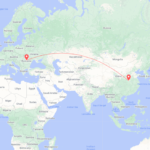


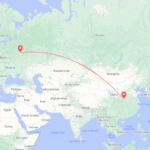
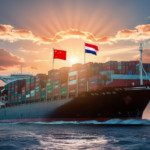

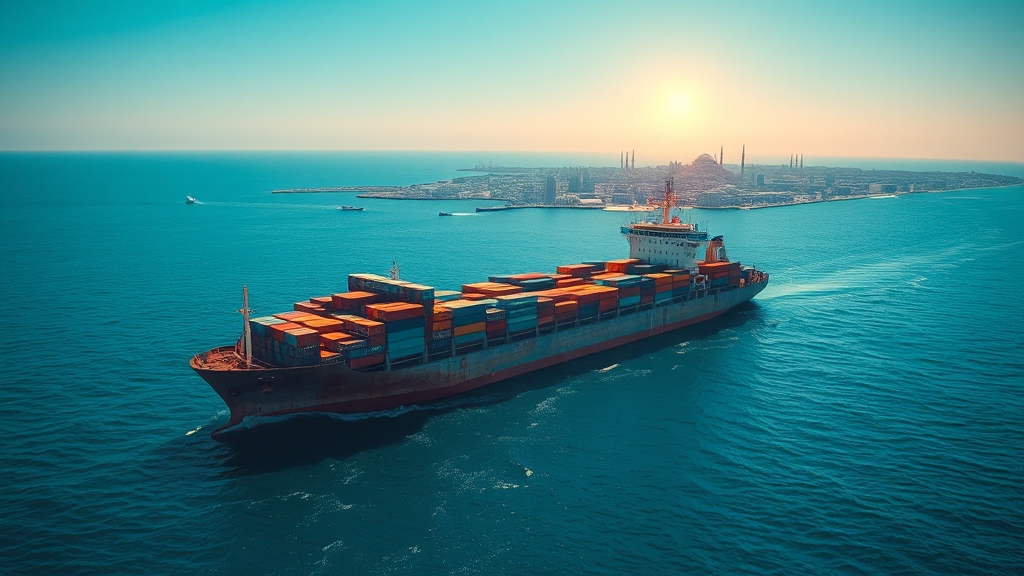
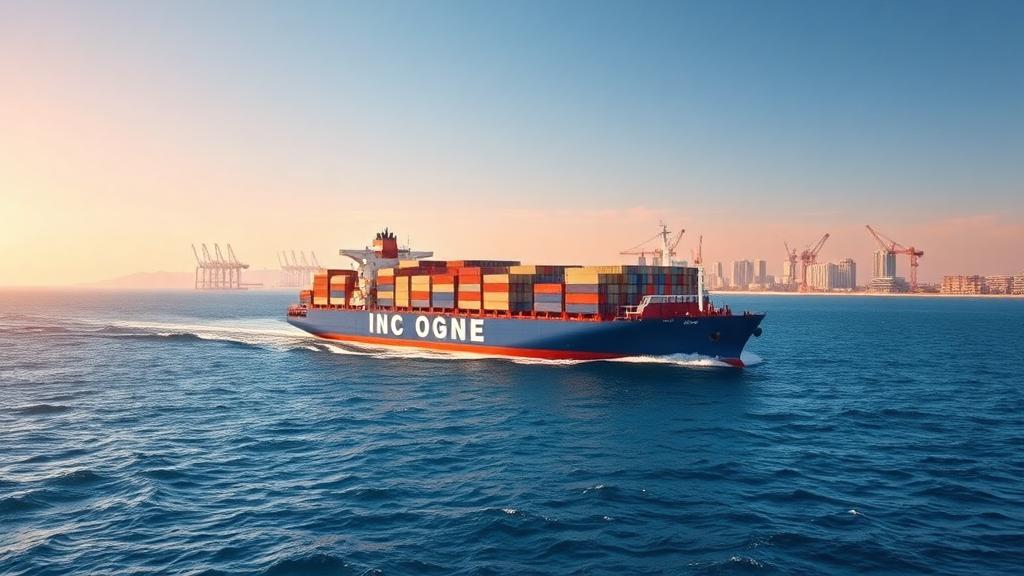
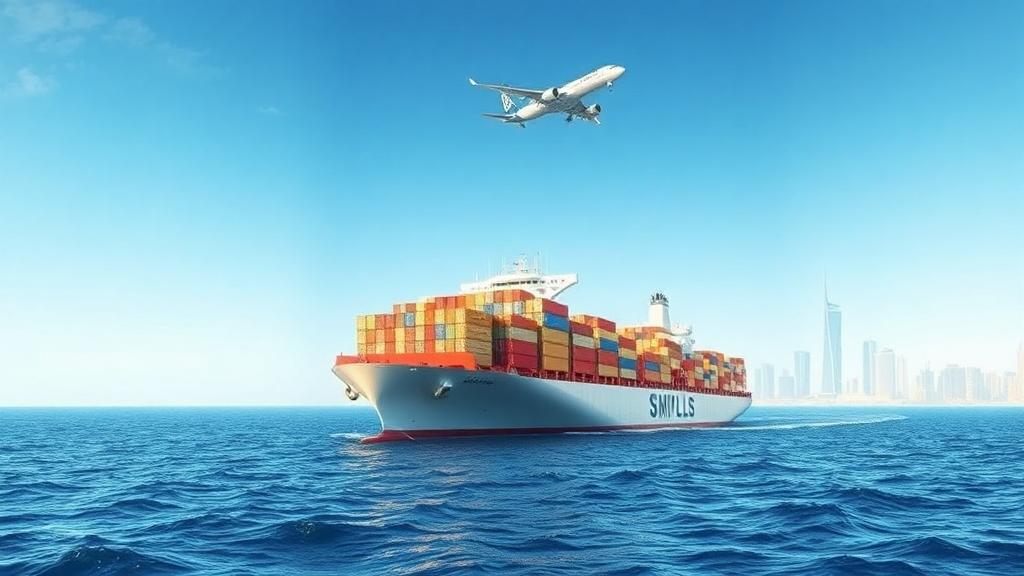
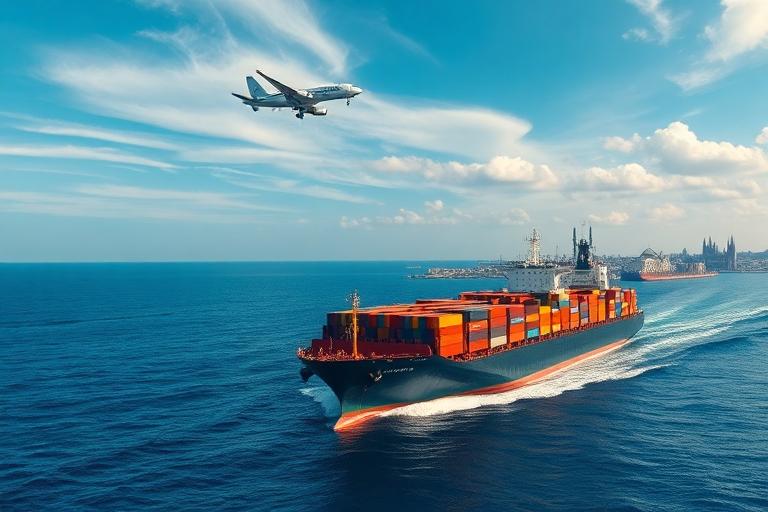





 Afrikaans
Afrikaans Shqip
Shqip አማርኛ
አማርኛ العربية
العربية Հայերեն
Հայերեն Azərbaycan dili
Azərbaycan dili Euskara
Euskara Беларуская мова
Беларуская мова বাংলা
বাংলা Bosanski
Bosanski Български
Български Català
Català Cebuano
Cebuano Chichewa
Chichewa 简体中文
简体中文 繁體中文
繁體中文 Corsu
Corsu Hrvatski
Hrvatski Čeština
Čeština Dansk
Dansk Nederlands
Nederlands English
English Esperanto
Esperanto Eesti
Eesti Filipino
Filipino Suomi
Suomi Français
Français Galego
Galego ქართული
ქართული Deutsch
Deutsch Ελληνικά
Ελληνικά Kreyol ayisyen
Kreyol ayisyen Harshen Hausa
Harshen Hausa Ōlelo Hawaiʻi
Ōlelo Hawaiʻi עִבְרִית
עִבְרִית हिन्दी
हिन्दी Hmong
Hmong Magyar
Magyar Íslenska
Íslenska Igbo
Igbo Bahasa Indonesia
Bahasa Indonesia Gaeilge
Gaeilge Italiano
Italiano 日本語
日本語 Basa Jawa
Basa Jawa ಕನ್ನಡ
ಕನ್ನಡ Қазақ тілі
Қазақ тілі ភាសាខ្មែរ
ភាសាខ្មែរ 한국어
한국어 كوردی
كوردی Кыргызча
Кыргызча ພາສາລາວ
ພາສາລາວ Latin
Latin Latviešu valoda
Latviešu valoda Lietuvių kalba
Lietuvių kalba Lëtzebuergesch
Lëtzebuergesch Македонски јазик
Македонски јазик Malagasy
Malagasy Bahasa Melayu
Bahasa Melayu മലയാളം
മലയാളം Maltese
Maltese Te Reo Māori
Te Reo Māori मराठी
मराठी Монгол
Монгол ဗမာစာ
ဗမာစာ नेपाली
नेपाली Norsk bokmål
Norsk bokmål پښتو
پښتو فارسی
فارسی Polski
Polski Português
Português ਪੰਜਾਬੀ
ਪੰਜਾਬੀ Română
Română Русский
Русский Samoan
Samoan Gàidhlig
Gàidhlig Српски језик
Српски језик Sesotho
Sesotho Shona
Shona سنڌي
سنڌي සිංහල
සිංහල Slovenčina
Slovenčina Slovenščina
Slovenščina Afsoomaali
Afsoomaali Español
Español Basa Sunda
Basa Sunda Kiswahili
Kiswahili Svenska
Svenska Тоҷикӣ
Тоҷикӣ தமிழ்
தமிழ் తెలుగు
తెలుగు ไทย
ไทย Türkçe
Türkçe Українська
Українська اردو
اردو O‘zbekcha
O‘zbekcha Tiếng Việt
Tiếng Việt Cymraeg
Cymraeg יידיש
יידיש Yorùbá
Yorùbá Zulu
Zulu